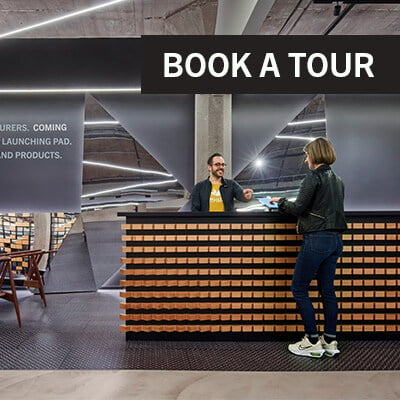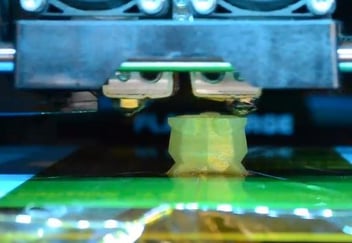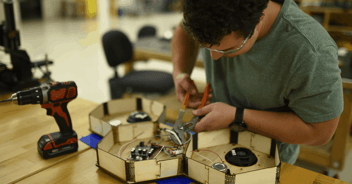Process improvements in manufacturing can mean different things to different people.
When some people think of process improvements, they may remember their experience going through the Six Sigma or Kaizen approach to implementing lean manufacturing principles into their production floor. For the team at mHUB Hardtech Development services, process improvement means finding opportunities to innovate in ways that help manufacturers save time, reduce costs, and improve overall equipment effectiveness. To help illustrate this, some of the experts who work on mHUB Hardtech Development projects are sharing their insights about how to make process improvements to your existing manufacturing production lines.
Have you looked at throughput lately?
Throughput is the amount of material or items passing through a system or process, and it is a critical factor when evaluating the efficiency of your manufacturing production line. It can be worthwhile for manufacturers to look at how fast their machines are running, how often they are operating, and whether there are bottlenecks in their process line.
“It is really important to address bottlenecks,” explains Henry Africano, Founder of Maximal and Mechanical Engineering Consultant with mHUB Hardtech Development services. “You’d be surprised at how often that is not being done, especially when identifying bottlenecks can be a significant cost-saving measure.”
“One reason these bottlenecks are going unnoticed is that the bottleneck often becomes part of the process. Workers and laborers adapt – it’s what they do best,” states Africano. “If manufacturers are not mindful of this, the workforce within the manufacturing facility will adapt rather than correct the inefficiency. So from a cultural standpoint, leaders in manufacturing have to condition themselves, and their workforce, to be problem-solvers rather than problem-adapters.”
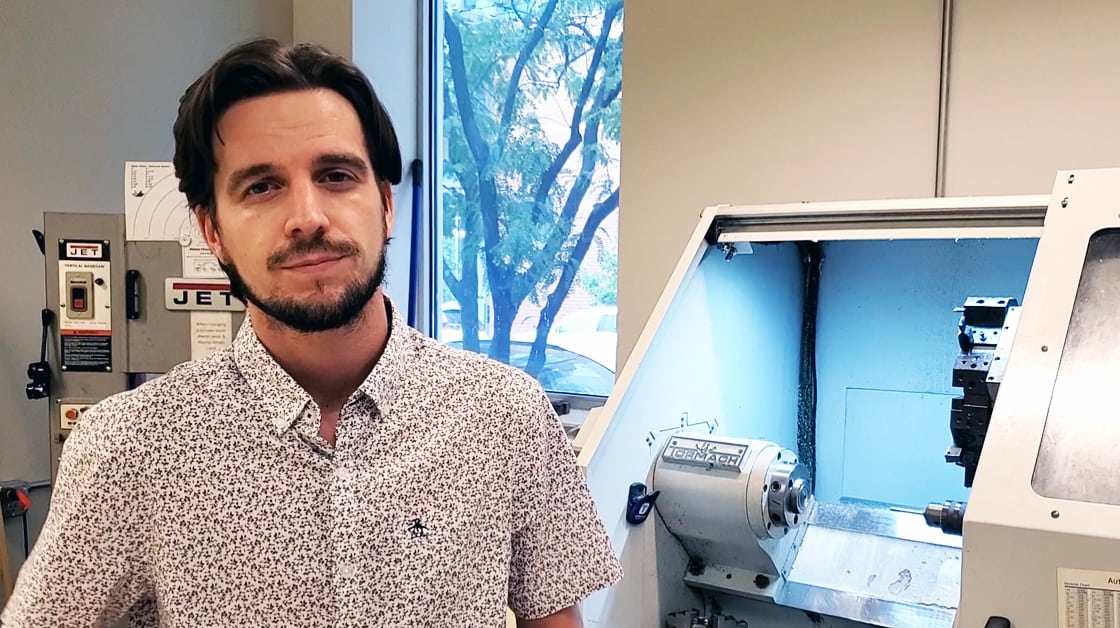
Henry Africano, Founder of Maximal, (a Chicago-based company that helps manufacturers find efficiency gains by integrating key production metrics within their ERP or MES tools) and Mechanical Engineering Consultant with mHUB Hardtech Development services.
Do you have the right data to measure OEE?
OEE stands for Overall Equipment Effectiveness, which is a global measurement of how all your equipment is operating. The equation for calculating your Overall Equipment Effectiveness is A x P x Q, where “A” stands for Availability (the machine is working at full capacity with no unplanned stops), “P” stands for Performance (the machine is operating as fast as possible), and “Q” stands for Quality (only the best parts are being produced – no defects).
Have you looked at all the machines operating in your production line? How available is each machine? Are they available when you need them? Are the machines running as fast as needed? Are the parts coming off as good as they should be? All of these questions are variables to plug into your equation, which help quantify your overall equipment effectiveness and manufacturing productivity.
“Small losses accumulate,” shares Africano. “For example, if a machine is running at 85% capacity, the quality of parts produced is at 85%, and the machine is unavailable 5% of the time – when you multiply those numbers together, OEE is 61%. That’s a typical industry average, but shows there’s an opportunity to increase OEE. Leaders in industry are more commonly operating with 85% Overall Equipment Effectiveness. When you’re taking stock of all the machines on your production floor, you start to see how small inefficiencies can have a larger impact.”
What opportunities exist to make process improvements?
It is common for small-to-medium sized manufacturers who have been in business for 50+ years to continue operating without realizing their workflow is not optimized. “The processes – where raw materials are coming in, getting placed into machine, where people are positioned on the manufacturing floor, and so forth – this is not always strategically placed,” states Nick Stagl, mHUB Hardtech Development Program Manager. “This often presents an opportunity for us to bring in specialists from the mHUB community for an on-site visit and evaluation. There may be recommendations we can make to shift assembly lines around, optimize the number of people on the assembly line, or maximize the throughput of the production process.”
Making process improvements should also involve employee support. Organizations who utilize the input of their workforce are often more successful at implementing production line improvements with measurable ROI. Involving employees who can identify bottlenecks and actively suggest ways to do the same work more efficiently is an immediate opportunity to improve productivity.
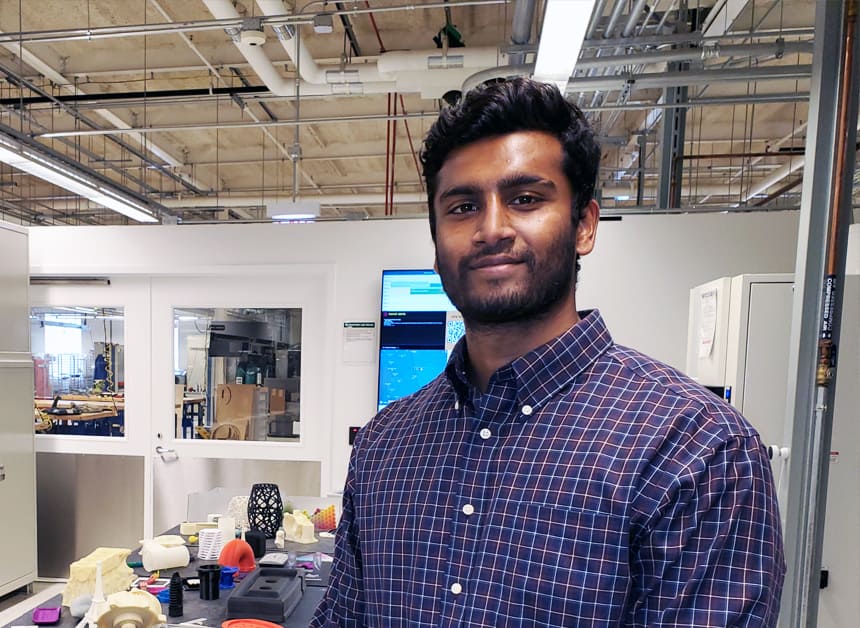
“There exists a great deal of data on the manufacturing floor,” states Zeeshan Faizal, Founder & CPO at Maximal and Consultant with mHUB Hardtech Development services. “Oftentimes, this data is not being used on a scale that empowers manufacturers to look at system wide effects. There is a lot of opportunity in instrumenting your machines and obtaining data that allows you to measure the system as a whole.”
Zeeshan Faizal, Co-Founder & CPO at Maximal and Consultant with mHUB Hardtech Development services.
Can mHUB Hardtech Development services help me with process improvements?
As part of the nation’s largest hardtech innovation center, mHUB Hardtech Development services is powered by a deep talent pool that has a great deal of knowledge and experience. “If a manufacturer comes to us and says they need help looking at their processes and evaluating potential for process improvements, we’re going to identify the Subject Matter Experts (SMEs) that are the best fit for the project,” explains Bill Fienup, mHUB Co-Founder and VP of Innovation Services (pictured to the left). “The role of mHUB Hardtech Development services is to pair up the manufacturer who needs modern innovation with the talented members here at mHUB. We can have an in-depth conversation, an initial site visit, and even a scope of work if it’s a good fit for all parties.”
If you need support with identifying and implementing process improvements at your manufacturing facility, contact mHUB Hardtech Development services by completing the form below.
References:
- https://www.industryweek.com/operations/continuous-improvement/article/21963326/quantifying-lean-benefits-5-steps-to-better-processcost-understanding
- https://www.oee.com/#:~:text=OEE%20(Overall%20Equipment%20Effectiveness)%20is,possible%2C%20with%20no%20Stop%20Time.
- https://www.maximalproduction.com/

